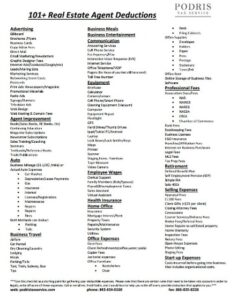Operating Cash Flow OCF: Definition, Cash Flow Statements
Content

But in the latter case with negative OCF, the company must seek external financing sources to meet its reinvestment spending needs, e.g. via equity and debt issuances. Mary Girsch-Bock is the expert on accounting software and payroll software for The Ascent. According to the reports above, Jones Bookstore currently has Net Cash from Operating Activities in the amount of $28,750. But Jeff Jones, the owner of the bookstore, has also invested in a small coffee shop next door to his bookstore, which pays him profits on his investment quarterly.
How do you calculate OCF from EBIT?
Operating Cash Flow = EBIT + Depreciation – Taxes
This is the amount the business made from its revenue minus the operating expenses. To determine the operating cash flow, the business must track its depreciation of assets used for operations and add this amount to its EBIT.
This increase would need to be added back into net income to fine the true cash impact. Twenty-nine percent of small businesses fail because they run out of money. To avoid this, you need to know how to calculate cash flow for your company before it gets too late. Luckily, there are different cash flow formulas to help small businesses monitor how money moves in and out as they go about their day-to-day operations. Finance ActivitiesThe various transactions that involve the movement of funds between the company and its investors, owners, or creditors in order to achieve long-term growth are referred to as financing activities. Such activities can be analyzed in the financial section of the company’s cash flow statement.
DEPRECIATION AND AMORTISATION AREN’T CASH
Now that you know how to calculate operating cash flow and the components of the formula, here’s a brief overview of what they are and where to find them. Analysts preferred to see a cash flow higher than 1.0 as this indicates the company is generating more cash than it is spending. There is a short and long version of the formula for calculating operating cash flow.

Earnings before interest, taxes, depreciation and amortization or just EBITDA is a kind of operating income which excludes all non-operating and non-cash expenses. With it, factors like debt financing as well as depreciation, and amortization expenses are stripped out when calculating profitability. Thus, it can be used to analyze and compare profitability among companies and industries, as it eliminates the effects of financing and capital expenditures . It is also a useful metric for understanding a business’s ability to generate cash flow for its owners and for judging a company’s operating performance. The difference between EBITDA and OCF would then reflect how the entity finances its net working capital in the short term.
How healthy is my business?
Note that formulas can be adjusted as needed for items not mentioned below. For example, that figure would include cash received from customers, cash paid to suppliers and employees. It is also crucial for future planning, as it gives you an idea of how the business is doing, whether operations are in a place and if expansion is possible.
To answer this question, publicly owned companies accompany their financial statements with statements of changes in financial position. A statement of changes gives information on the company’s important investing and financing Operating Cash Flow Formula decisions with a focus on how such decisions affected its liquidity. When the accounting rule-makers mandated the statement in 1971, working capital was considered a good measure of a company’s liquid position.
How to Calculate Operating Cash Flow (With Example)
Below is an example of what this activity looks like in a spreadsheet. The indirect method begins with net income from the income statement then adds back non-cash items to arrive at a cash basis figure. If you’re looking for accounting software to help you calculate your operating cash flow, be sure to check out The Ascent’s accounting software reviews. The direct method starts with revenue and simply subtracts operating expenses.
What is cash flow operating ratio?
The Operating Cash Flow Ratio, a liquidity ratio, is a measure of how well a company can pay off its current liabilities with the cash flow generated from its core business operations. This financial metric shows how much a company earns from its operating activities, per dollar of current liabilities.
Stock-based compensation must be recorded as an expense on the income statement, but there is no actual outflow of cash. Since the company pays the CEO, CFO, and other employees with stock, the company issues shares instead of giving them cash. There is definitely an economic cost to stock-based compensation since it dilutes other shareholders. However, when calculating operating cash flow, it must be added back.
Things you Should do to Prepare for 2022 Taxes
Conversely, a negative operating cash flow is not desirable as it indicates the company is spending more cash than it is generating. This can be a sign that the company is in financial trouble and may need to seek external financing to sustain its operations. Operating cash flow and free cash flow are both metrics used to assess the financial stability of a company, https://quick-bookkeeping.net/ typically to determine if the cash generated is enough to meet its spending needs. Operating Cash Flow measures the net cash generated from the core operations of a company within a specified time period. Two methods of presenting the operating cash flow section are acceptable under generally accepted accounting principles —the indirect method or the direct method.
- But in the latter case with negative OCF, the company must seek external financing sources to meet its reinvestment spending needs, e.g. via equity and debt issuances.
- Arming yourself with a little accounting know-how can keep you in control of your business finances, making sure you stay profitable in the short- and long-term.
- These formulas help ensure you have enough cash not only to survive, but also to grow and expand.
- Of companies, lenders will look at their OCF because it can tell lenders about the company’s ability to pay their necessary expenses.
- For example, an increase in AR indicates that revenue was earned and reported in net income on an accrual basis although cash has not been received.
- NOCF can be used to measure a company’s ability to generate cash flow from its operations and to cover its operating expenses.
- Your company’s accounting objectives may determine which cash flow categories you choose to work with.
